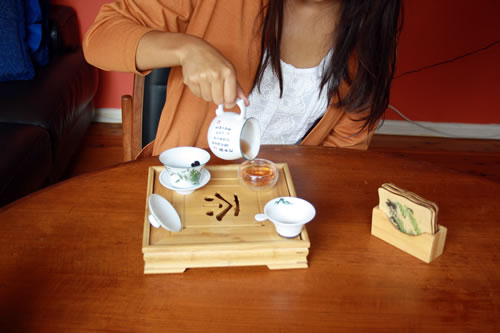Tea water separation a strange but useful term
- Print ,
It is almost impossible to talk about a tea without water, from cultivation to the final stage of tea brewing.
The ‘tea water separation’ discussed here is however a different but meaningful concept.
The very reason that teas are delightful to sensors is because of the effects of their internal substances. The correct brewing methods maximise the extraction of these substances and their optimal concentration in the tea brew.
‘Tea water separation’ is a term used to describe the breakdown of this process. The impression is the ‘incomparability of the tea and water’.
Following are some of the causes to ‘tea water separation’ of Pu-erh teas:
Processing issues:
 Tea leaves harvested during the raining season, Chinese term ‘水味’ (water taste)
Tea leaves harvested during the raining season, Chinese term ‘水味’ (water taste)- Short of rubbing during the processing. These causes the insufficient release of the internal substances for tea brew.
- Not steamed and compressed thoroughly during the processing. The ‘tea water separation’ phenomenon is especially prominent when new/young for these teas.
Brewing method issues:
- Pu-erh tea requires 100-degree temperature hot water to brew the tea. The tea can taste ‘watery’ if the water temperature is not high enough.
- Insufficient ‘tea waking (醒茶)’ time. It takes normally 5-10 seconds for the tea leaves to be separated from each other when brewing compressed tea. A rush to serve the tea can cause the brew to taste ‘tea water separation’.
- Inadequate serving intervals can cause the tea internal substances to dissolve in the brews unevenly.
- Too many infusions from one serve of the tea leaves.


